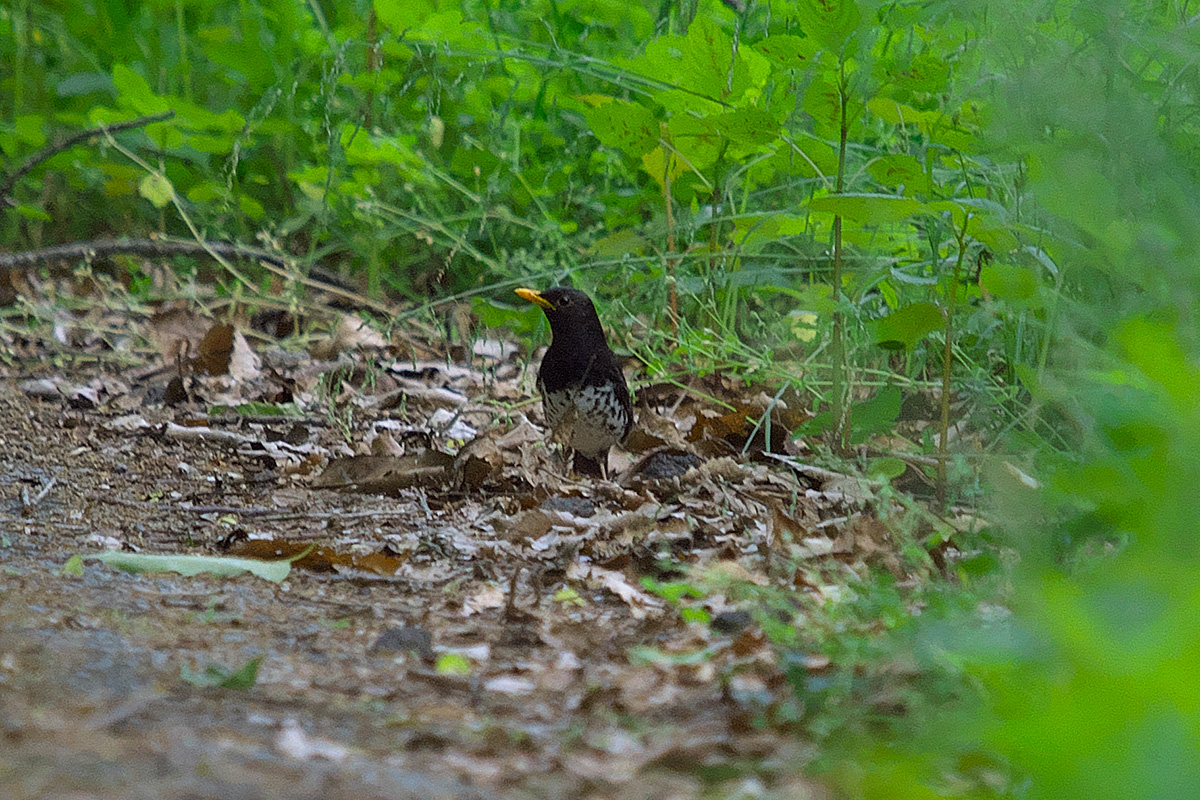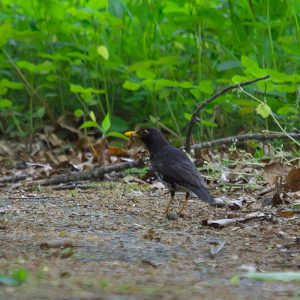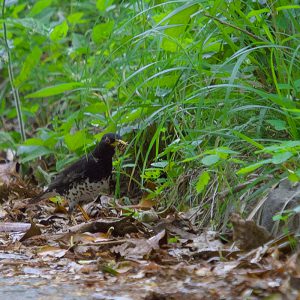むなかたが集まる
電子データベース
電子データベース
クロツグミ

| 種目 | クロツグミ (黒鶫) | 分類 |
スズメ目 ヒタキ科 ツグミ属 |
学名 | Turdus cardis | 英名 | Japanese Thrush |
|---|---|---|---|---|---|---|---|
|
クロツグミ (黒鶫) |
スズメ目 ヒタキ科 ツグミ属 |
Turdus cardis | Japanese Thrush |
宗像市でみられる場所・時期
宗像では旅鳥で,春秋の渡りの時期(4月ころ,10月ころ)に,市内全域で観察できるが,通過個体が少なく,機会は限られる。
特徴
全長22㎝くらい。ツグミより小さい。
雄は,頭部から背以下の体上面,腮から胸は黒色で,個体により背以下の体上面が灰褐色の個体もいる。腹以下の下面は白く,黒色の丸い斑がある。嘴,眼瞼輪は黄色である。
雌は,頭部から体上面はオリーブ褐色で,腮から体下面は白く,顎線,喉に黒褐色の細かい縦斑がある。脇以下の下面には黒褐色の丸い斑があり,脇は橙褐色となる。
嘴眼瞼輪は雄よりもやや鈍い黄色である。
雌雄とも足は橙褐色。
習性
平地から山地の比較的明るい林,日本海側では防砂林の松林やニセアカシアの林などに飛来する。林内から出ることは少なく,地上でミミズ類を好んで捕らえる。
囀りは,「キョローン キョローン キョコ キョコ ピリィー」など変化に富んだ鳴き方である。
分布
九州以北で夏鳥,南西諸島では旅鳥となる。北海道や東北の一部では平地の林や河畔林などで繁殖している。渡りの時期には都市部の公園にも姿を見せることがある。
 はじめに
はじめに お問い合わせ
お問い合わせ

